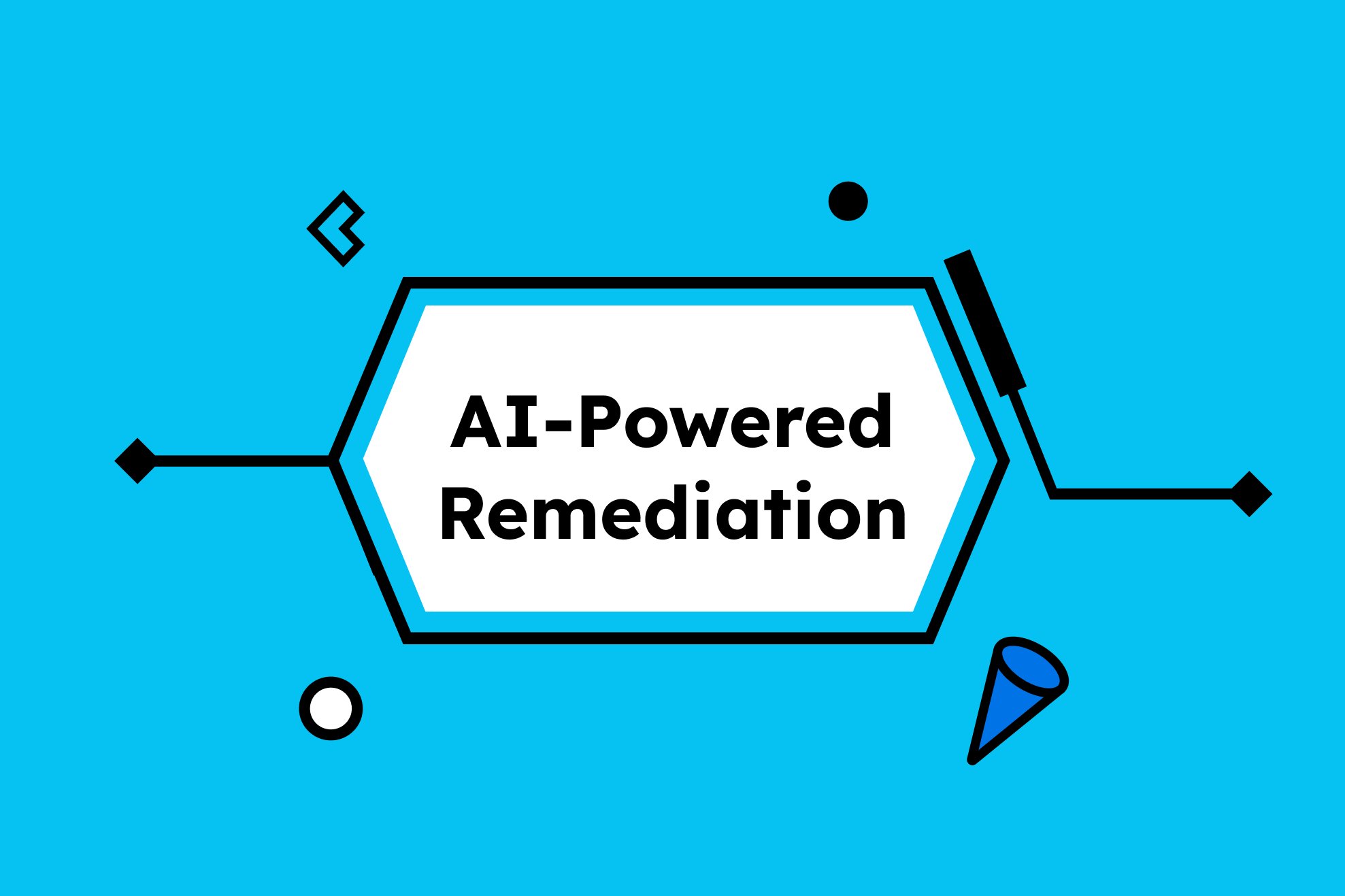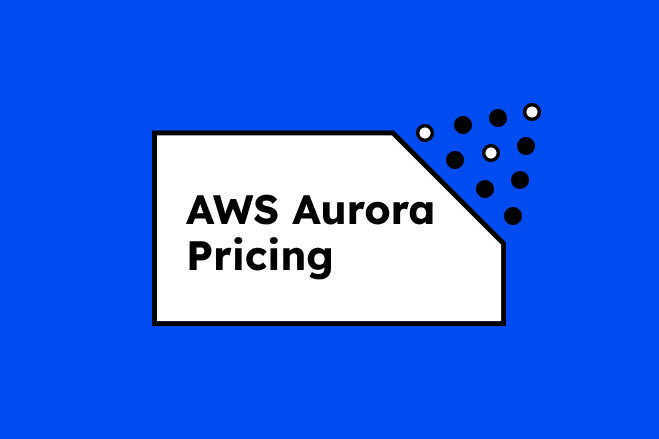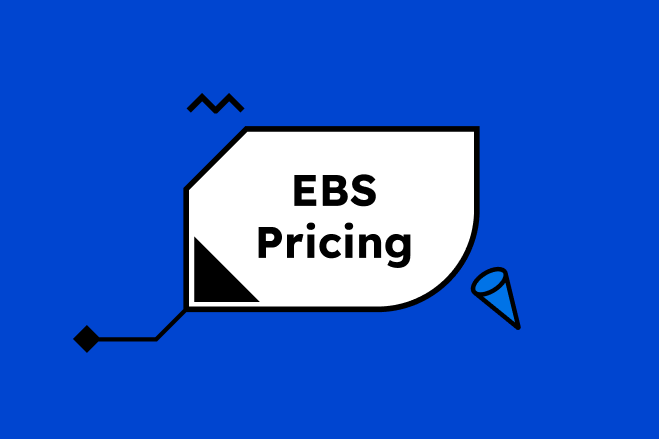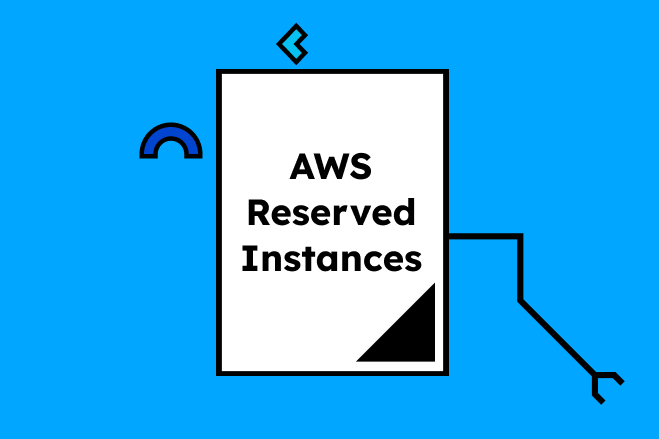Table of Contents

Machine learning at scale doesn't come cheap, and AWS SageMaker makes that crystal clear. While it offers the convenience of fully managed infrastructure, SageMaker's cost structure is far from straightforward. From instance sprawl and idle endpoints to training inefficiencies and forgotten EBS volumes, the potential for overspending is baked into the platform.
This guide is for the developers, MLOps engineers, and infrastructure leads who need more than a surface-level overview. It provides a detailed breakdown of SageMaker's pricing dimensions, helps you understand the trade-offs between service components, and offers practical FinOps strategies to manage costs effectively. Whether you're launching quick experiments or scaling production models, gaining control over SageMaker's pricing mechanics is essential to avoiding budget surprises.
AWS SageMaker Pricing Fundamentals

SageMaker is a powerhouse for machine learning workloads with the convenience of managed infrastructure. But with great ML power comes the need for cloud cost insight. Let's demystify SageMaker's pricing so your team can optimize models and money.
Overview: How SageMaker Charges You
AWS SageMaker pricing is usage-based, but fragmented across multiple service components. You pay for what you use, including training, inference, and infrastructure, but understanding what exactly is "used" (and when) is critical for cost-aware deployments.
Amazon SageMaker's pricing dimensions include:
- Model Training
- Inference (Real-Time & Batch)
- Notebook and Processing Instances
Endpoints (for Real-Time Inference) - Storage (EBS and model artifacts)
Now let's break down each of these cost pillars:
|
Cost Area |
What You're Charged For |
Key Optimization Strategies |
|
Model Training |
Instance type, duration, Spot vs. On-Demand, S3 data transfer, preprocessing time |
Use Spot Instances, right-size based on utilization, stream data with Pipe Mode, profile jobs for better selection |
|
Inference (Real-Time & Batch) |
Real-time endpoint uptime, instance type, batch job duration, data processed, HTTPS & inter-AZ traffic |
Prefer batch or serverless for low-frequency jobs, use auto-scaling, avoid idle endpoints |
|
Data Processing & Feature Engineering |
Per-second compute time for processing steps, and pipeline execution |
Use serverless options (e.g., AWS Glue, Lambda) where suitable, minimize intermediate data storage, parallelize tasks efficiently, reuse feature artifacts to avoid redundant compute, leverage caching for common transformations |
|
Experimentation & Development (Studio/Notebooks) |
Per-second compute time for notebooks |
Enable auto-stop, right-size compute, automate shutdown of idle resources, monitor usage with CXM-style automation |
|
Model Hosting (Persistent Endpoints)(Real-Time) |
Always-on compute time, instance type, unused capacity |
Replace with serverless or multi-model endpoints where possible, monitor with CI/CD-integrated cost alerts |
|
Storage (EBS, S3, ECR) |
EBS volumes (provisioned IOPS), S3 storage and API calls, ECR image size |
Enforce DeleteOnTermination, tag and clean orphaned resources, move aged data to Glacier, prune old ECR containers |
1. Model Training Costs
SageMaker model training costs are driven by compute and time, but the cost delta between different instance types is massive—an ml.p4d instance can cost 600x more per hour than an ml.t3.medium. Choosing between CPU-optimized and GPU-backed instances should depend not only on the model architecture but also on the scale of your data and training time requirements.
Each training job incurs per-second billing (after a 1-minute minimum), which makes optimization granular, but only if teams have visibility into runtime and resource efficiency. For instance, underutilized GPU memory or I/O bottlenecks often result in wasted cost even when the instance type appears "rightsized" on paper.
Managed Spot Training is one of SageMaker's most powerful cost levers. By using EC2 Spot Instances within managed training jobs, you can cut costs by up to 90%, especially when running distributed training or experimenting with hyperparameter tuning. Spot interruptions are handled automatically by SageMaker's retry logic, making it a low-risk option for stateless, parallelized workloads.
Data I/O adds hidden cost layers. If training data lives in S3 and is accessed frequently or in large volumes, you'll pay for both data transfer and S3 request costs, especially if you're using cross-AZ or cross-region storage. Compressing datasets, caching preprocessing steps, and using pipe mode (streaming data directly from S3) are all effective ways to mitigate this.
Automating training job profiling (runtime, memory usage, GPU utilization) and applying heuristics to recommend instance types based on past runs can reduce experimentation costs significantly and prevent teams from defaulting to overpowered, underutilized resources.
2. Inference Costs: Real-Time vs Batch

Inference costs can spiral rapidly if the wrong serving mode is chosen. Real-time inference relies on always-on endpoints, meaning you pay for compute uptime regardless of how often the endpoint is called. This is ideal for low-latency production workloads like fraud detection or recommendation engines, but a poor fit for spiky or infrequent traffic. Costs are determined by the hourly instance rate and the volume of data processed, with additional charges for inter-AZ data transfer or invocation over HTTPS endpoints.
In contrast, Batch Transform jobs spin up compute only when needed, making them far more cost-efficient for offline inference, large-scale batch scoring, or retraining loops. You're billed per second for compute and data handling, but only during the job's execution; there's no idle cost.
For bursty or unpredictable workloads, Serverless Inference is the ideal hybrid. It charges per invocation and duration, scales to zero when idle, and eliminates the burden of provisioning and managing endpoint infrastructure altogether. While slightly more expensive per request, it removes the financial risk of underused endpoints.
Start all new inference workloads in batch or serverless mode unless latency SLAs demand otherwise. Only graduate to persistent real-time endpoints when traffic volume justifies the always-on cost. CXM can add value here by embedding inference-mode recommendations into deployment pipelines based on usage frequency or request patterns.
3. Instances: Notebooks, Processing, Pipelines
SageMaker charges for various compute activities beyond training and inference. Notebook instances, often used for model experimentation and data exploration, incur hourly charges based on the underlying instance type. These are convenient for ad hoc work but notorious for being idle and racking up unnecessary costs.
Processing jobs, used for data transformation or model evaluation, follow a similar billing structure: usage is metered by compute duration and instance type. Then there are SageMaker Pipelines, which orchestrate ML workflows.
Each pipeline step is executed on compute resources billed independently, meaning complex workflows can become expensive if not properly scoped or monitored. To keep costs under control, it's essential to shut down unused notebooks, size processing jobs appropriately, and keep pipelines lean. Based on historical usage patterns, CXM-style automation could easily flag idle notebooks or recommend right-sized compute for pipeline stages.
4. Endpoints: Your Silent Budget KillerEndpoints are perhaps the most underestimated contributor to SageMaker bills. Once deployed for real-time inference, these endpoints operate continuously, regardless of whether they're receiving traffic. That means you're billed every hour they're running, even if they're sitting idle.
Depending on the instance type (especially for inference-optimized options like ml.inf1 or GPU-backed classes), costs can escalate quickly. It's easy for teams to forget that a deployed endpoint doesn't automatically scale to zero, and without proactive cleanup or automation, these resources can linger for weeks.
The solution? Consider using multi-model endpoints to consolidate workloads, implement auto-scaling policies to match actual traffic, or replace low-traffic endpoints with serverless inference where appropriate. For developer-focused teams, integrating automated alerts for idle endpoints or embedding endpoint lifecycle management into operational reviews and developer tools can be a simple but powerful FinOps win.
5. Storage: Models, Volumes, ArtifactsSageMaker storage costs are often overlooked because they accrue slowly, but persistently. There are three main contributors:
- EBS volumes, which are automatically provisioned when launching notebooks or training jobs. These can be expensive if left attached to unused resources. The ml.p instance class often uses provisioned IOPS volumes, significantly increasing monthly cost if not cleaned up.
- Model Artifacts in S3, which include trained models, logs, metrics, and datasets. These grow over time and may be replicated across environments or regions, multiplying costs unnecessarily. S3 costs also increase with PUT and GET request rates, versioning, and lifecycle storage transitions.
- Container Images in ECR, especially if you're using custom inference or training containers. These repositories can grow stale and unreferenced, yet continue to incur storage charges month after month.
- Optimize S3 downloads using parallel tooling. Tools like s5cmd enable parallel loading of S3 resources, accelerating data transfer and reducing the compute time spent on the download phase. This results in meaningful cost savings during data-intensive operations.
A major storage oversight comes from unused volumes that remain after instance termination. While SageMaker root volumes default to DeleteOnTermination=true, non-root EBS volumes do not—meaning they persist silently unless explicitly deleted. This leads to what many teams refer to as "volume sprawl."
Use lifecycle policies to regularly clean up orphaned EBS volumes, transition aged S3 artifacts to Glacier or delete them outright, and prune unused ECR images. CXM's automation can flag "zombie" volumes or stale artifacts and recommend safe cleanup actions.
Use the SageMaker Pricing Calculator (Seriously)
The AWS Pricing Calculator lets you estimate costs for AWS SageMaker based on:
- Instance type/duration
- Number of endpoints or batch jobs
- Model sizes
- Training frequency
Bookmark it, integrate it into planning stages, and always compare between instance classes and deployment modes.
SageMaker Instance Pricing: Know Your T3s from Your P4s

If SageMaker is the engine, instances are the fuel. And as any engineer will tell you, not all fuel is created equal. Choosing the right instance type directly impacts both performance and your cloud bill. Whether you're training a transformer model or running a lightweight inference task, knowing your ml.t3s from your ml.p4ds isn't just trivia, it's FinOps best practice.
Instance Cost Breakdown: SageMaker's Alphabet Soup
SageMaker instance costs are billed by the hour (or second, with a 1-minute minimum), and pricing varies dramatically based on class, capacity, and GPU vs CPU. Below is a quick overview of commonly used instance types:
|
Instance Type |
Category |
Specs (Example) |
Ideal For |
On-Demand Price (us-east-1, approx.) |
|
ml.t3.medium |
General Purpose |
2 vCPU, 4 GB RAM |
Lightweight dev/test notebooks |
~$0.05/hour |
|
ml.m5.large |
Compute-Optimized |
2 vCPU, 8 GB RAM |
Small training jobs, batch tasks |
~$0.12/hour |
|
ml.c6i.xlarge |
Compute-Optimized |
4 vCPU, 8 GB RAM, higher throughput |
Training with better I/O |
~$0.17/hour |
|
ml.g5.xlarge |
GPU Inference |
1 NVIDIA A10G GPU, 4 vCPU, 16 GB RAM |
High-throughput inference |
~$1.20/hour |
|
ml.p3.2xlarge |
GPU Training |
1 NVIDIA V100, 8 vCPU, 61 GB RAM |
Deep learning model training |
~$3.06/hour |
|
ml.p4d.24xlarge |
GPU Training |
8 NVIDIA A100s, 96 vCPU, 1.1 TB RAM |
Large-scale distributed training |
~$32/hour |
Note: These rates are for on-demand pricing. Spot instances can cut costs by up to 90%, while Reserved Instances and Savings Plans offer longer-term discounts.
Selecting the Right Instance for the Right Job
Training and Inference require different hardware profiles. Training is compute-heavy and benefits from large GPU clusters, while inference (especially in production) needs low-latency, scalable endpoints.
- For Development or Experimentation: Start with ml.t3.medium or ml.m5.large to keep costs minimal. Enable auto-shutdown to avoid forgotten notebooks.
- For Model Training: Use ml.p3 for mid-sized models or ml.p4d for massive training jobs (e.g., GPT-like architectures). Consider distributed training and data parallelism to fully utilize the compute.
- For Inference at Scale: Opt for ml.g5 or ml.inf1 instances. These are designed specifically for optimized real-time inference. For lighter loads, ml.c6i or ml.m5 can also work with serverless inference endpoints.
FinOps Guidance: Choose With Precision
- Benchmark your model: Over-provisioning GPU power is one of the most common and costly mistakes. Run test jobs on smaller instances first.
- Use Spot Instances: For non-critical training jobs, SageMaker Managed Spot Training can yield massive savings.
- Go Serverless: If you serve infrequent or unpredictable inference requests, serverless endpoints (with pay-per-invocation pricing) can cut idle costs.
- Monitor Continuously: Frequently review your usage and involve engineers using the instances to validate that their usage matches their instance selection, and iterate quickly.
In short, every SageMaker instance type has its place, just not everywhere. Selecting the right tool for the job is what separates cost-effective AI operations from an over-engineered budget sinkhole.
Understanding SageMaker Domain Cost, Billing, and Overhead

SageMaker Domains are like control towers for your machine learning teams. They centralize access to SageMaker Studio, user profiles, notebooks, pipelines, and data. Convenient? Absolutely. But if you're not careful, Domains can also quietly become cost centers that bleed your budget dry.
What Is a SageMaker Domain, And What Does It Cost?
A SageMaker Domain is essentially the management layer that hosts SageMaker Studio, AWS's web-based ML IDE. Inside a Domain, you can create user profiles, each of which can launch apps (e.g., JupyterLab, RStudio) on SageMaker compute instances.
Here's the cost kicker: Domains themselves are free, but everything inside them incurs charges, often silently.
You'll be billed for:
- Studio Apps per User: Each user profile can spin up compute-backed apps (like Jupyter notebooks). These apps are backed by EC2 instances such as ml.t3.medium, and billing runs by the second.
- EBS Volume Attachments: Every user gets a persistent storage volume, which accrues charges whether in use or not.
- Idle Apps: If a Studio app is left running (common during prototyping), compute costs continue even when it's not in active use.
The combination of long-lived EBS volumes and forgotten apps is one of the most common causes of surprise SageMaker bills, especially in shared domains with multiple users.
Tracking SageMaker Billing Without Losing Your Mind
![]()
AWS billing isn't exactly developer-friendly, and SageMaker's complexity doesn't help. Here are the top ways to improve billing visibility:
- Enable Detailed Billing Reports: Activate cost and usage reports (CURs) to capture service-level granularity.
- Use the SageMaker Studio UI: It offers basic cost attribution per app, but lacks team-wide views unless extended with external tools.
- Integrate with AWS Budgets: Set thresholds and alerts on cost growth—especially for projects with multiple profiles or training pipelines.
To prevent surprises, consider deploying automated cost monitoring scripts or integrating a FinOps platform like CXM that can track spend by domain, user, and resource in real-time.
Tags, Allocation, and Proactive Cost Hygiene
The single most powerful tool in your cost governance toolbox is resource allocation and attribution.
There are 2 ways to achieve this. The hard path is applying structured tags to every user profile, notebook, pipeline, and endpoint within a domain which enables:
- Attribute costs back to specific teams or projects
- Filter and group spend by tag using AWS Cost Explorer or CloudWatch
- Automate alerts for unused or idle resources tagged with "dev" or "test"
CXM provides an easy way forward. Allocation and attribution are autonomously done in the background, and you can reap the same benefits without having to maintain a complex tagging strategy.
Your end goal should be to get a good coverage of your assets across at least the following dimensions: Owner, Project, Environment, Team
From there, you can set lifecycle policies for unused profiles and volumes (e.g., delete after X days of inactivity)
SageMaker Domains provide valuable structure and governance, but they come with hidden costs that demand constant oversight. With proactive allocation and attribution, monitoring, and cost attribution in place, you can enjoy the productivity boost of Studio without letting it become a budgetary black hole.
AWS SageMaker Cost Optimization Tips

SageMaker offers a powerful infrastructure for machine learning. But if Sagemaker is left unmanaged, it's a cost leak waiting to happen. The good news? With the right FinOps tactics and a bit of automation, you can drastically reduce waste without throttling innovation.
1. Schedule and Shut Down Unused Resources
SageMaker isn't like your laptop—it doesn't sleep when you're done. Notebooks, training jobs, and especially endpoints continue to accrue charges until explicitly shut down. Idle Studio apps (like JupyterLab) are one of the most common culprits.
Key actions:
- Enable auto-shutdown on notebook instances and Studio apps.
- Use lifecycle configuration scripts to automatically stop resources after periods of inactivity.
- Clean up orphaned EBS volumes and unused model artifacts regularly.
CXM-style optimization: Automate shutdowns at the end of the dev day or when CPU/memory usage drops below a threshold that you set.
2. Monitor with CloudWatch & AWS Budgets
Real-time visibility in SageMaker is non-negotiable. CloudWatch and AWS Budgets provide the foundation for this visibility, enabling teams to stay ahead of runaway costs. CloudWatch can be used to monitor key metrics like notebook uptime, endpoint invocation frequency, or GPU utilization. When configured correctly, it becomes the frontline for identifying inefficiencies, such as underutilized compute or long-lived training jobs.
Meanwhile, AWS Budgets acts as your financial guardrail. You can define monthly or project-specific thresholds and trigger alerts when forecasted spend is projected to exceed those limits. These alerts act as a signal to pause, investigate, and act before small missteps snowball into large bills. When paired with intelligent tagging strategies, these tools allow cost data to be segmented by team, workload, or environment, making accountability granular and actionable. Add in Cost Anomaly Detection, and you're no longer just reacting to spending; you're forecasting and preventing it.
3. Workflow Automation and CXM-Style FinOps Alerts
Manual cost control doesn't scale. That's where automation and, more importantly, developer-native automation comes into play. With CXM-style workflows, cost governance becomes part of the engineering rhythm and applying best practices is done automatically so you can focus on the value you generate.
Policies can be enforced automatically ensuring every SageMaker resource is attributed to an owner or team without relying on human discipline. Real-time alerts, delivered through tools developers already use, like Slack, GitHub, or email, can prompt immediate action when resources behave abnormally. Think: a GPU training job running idle for hours, or an endpoint breaching its daily cost threshold. These alerts don't just notify, they drive decisions. By integrating FinOps feedback loops directly into cloud workflows, CXM makes cost control continuous, not retrospective. It's proactive, contextual, and designed for the pace of modern development.
Conclusion
SageMaker simplifies the deployment of machine learning models, but keeping its costs in check demands thoughtful planning, consistent monitoring, and the right tools. Your cost outcomes depend heavily on your decisions, such as selecting the right instance type, enforcing shutdown policies, optimizing storage, and choosing between batch and real-time inference.
For teams that prioritize speed, experimentation, and production readiness, financial oversight is not just about saving money. It is about enabling sustainable innovation. Integrating FinOps practices and CXM-style automation into your development workflows makes SageMaker a more predictable and efficient part of your ML stack.
When you manage SageMaker with visibility and intention, you reduce waste and unlock more resources to invest in what truly matters, which is building faster models.
Start optimizing your cloud environment today with CXM. Reach out to us for a demo!
Effortlessly Manage Your Cloud, Improve Efficiency, and Increase Your Returns.
Newsletter Signup
Subscribe to our newsletter to receive the latest news.








